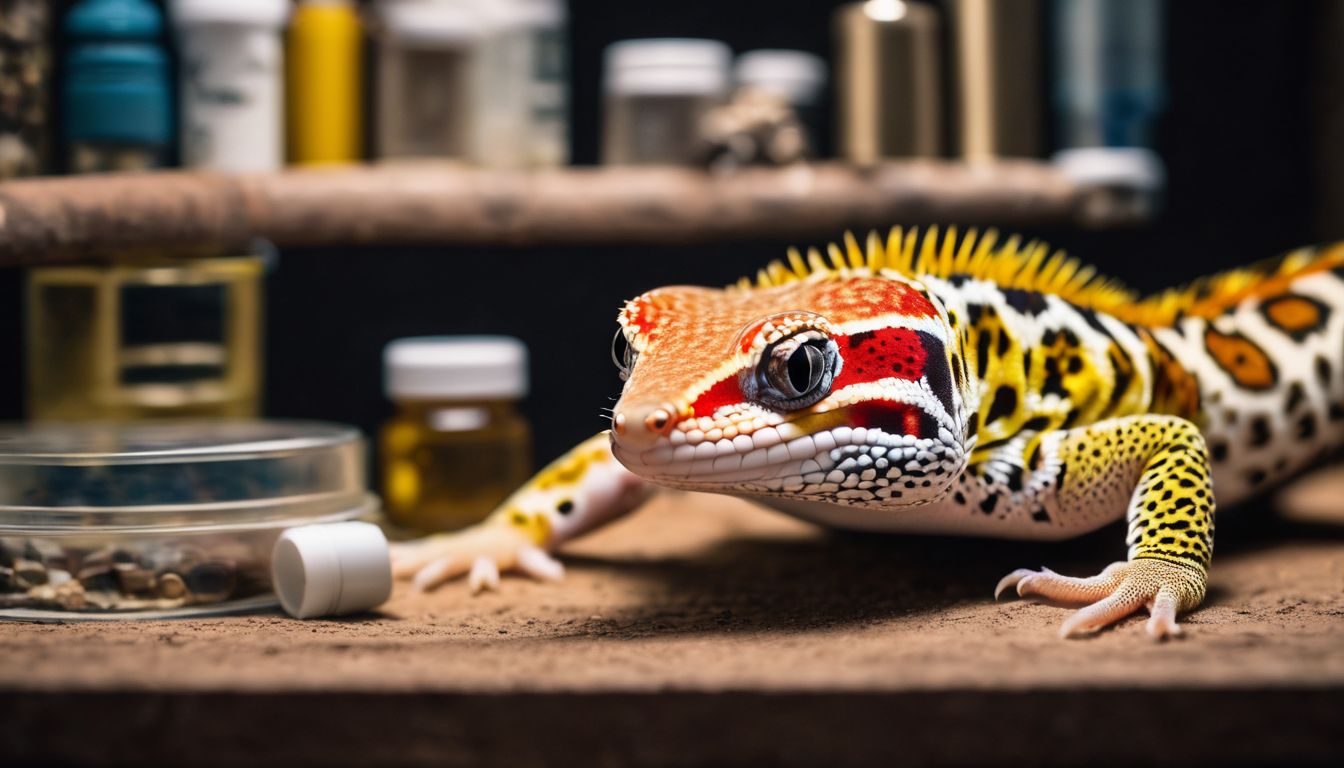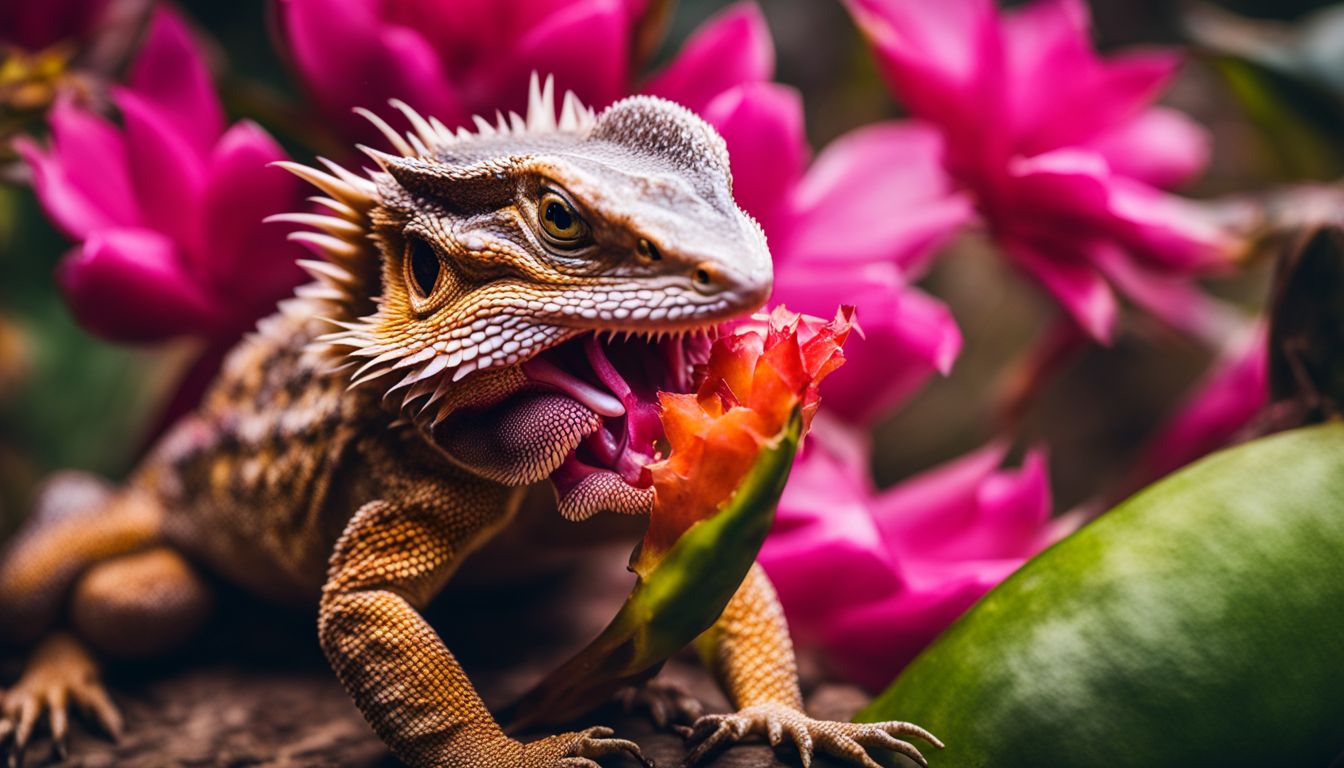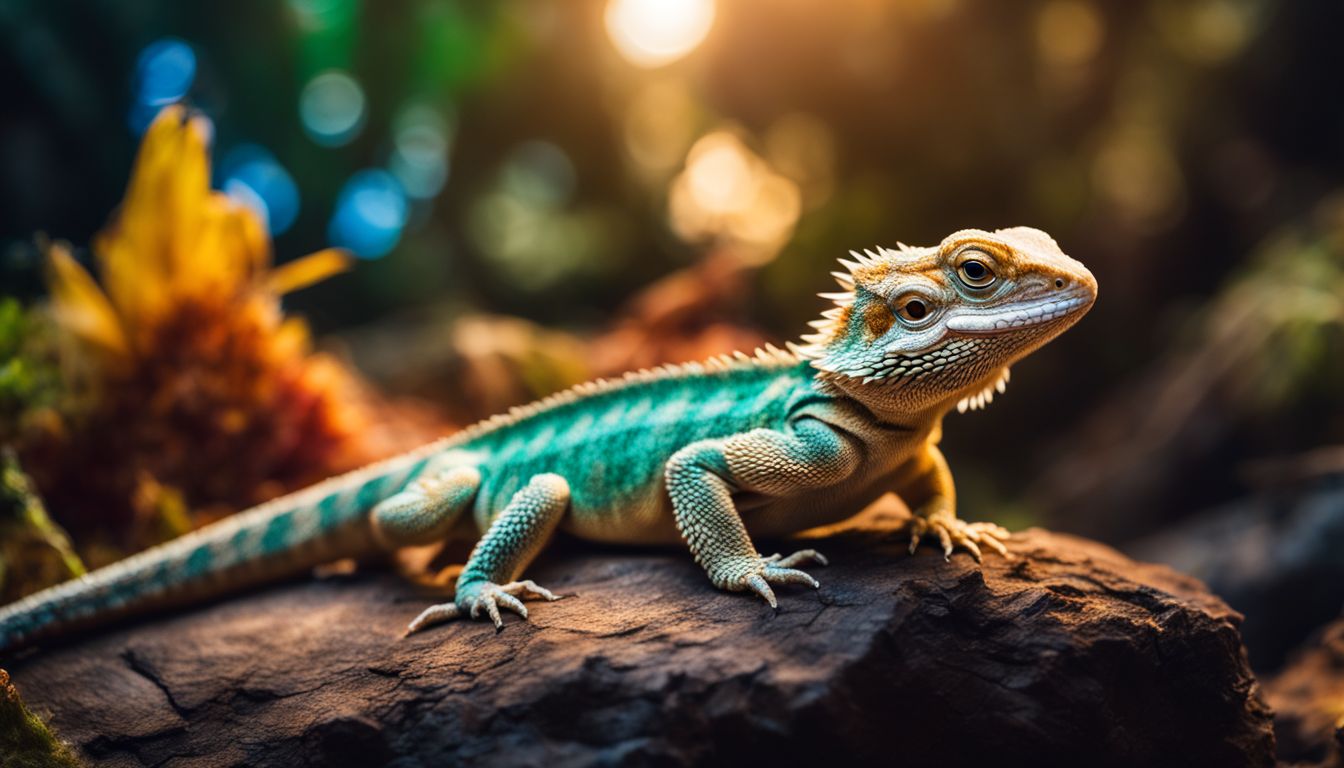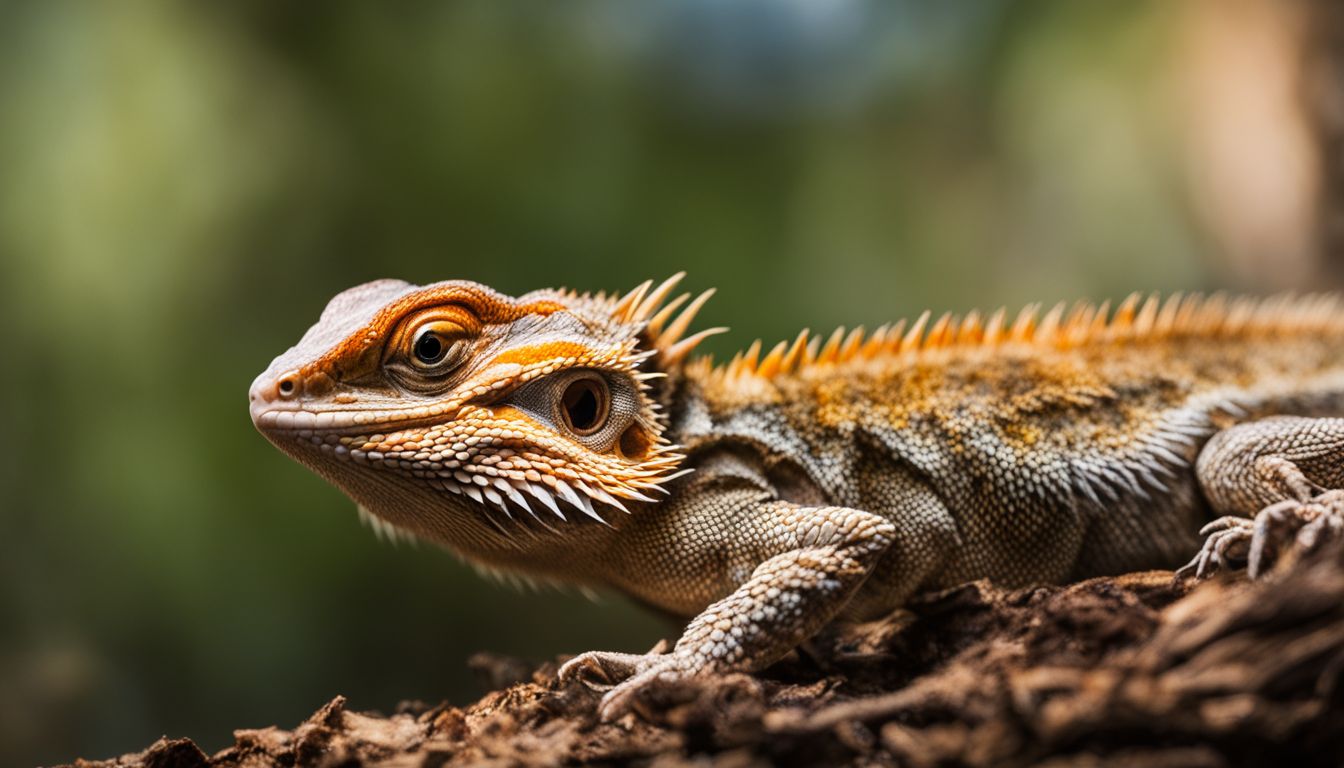Leopard geckos are cherished pets known for their vibrant personalities and ease of care. But as a responsible owner, it’s crucial to know not just how to keep them happy and healthy but also to recognize when something is wrong.
Spotting the signs early can be the difference between life and death for your scaly friend.
Something no reptile enthusiast wants to face is finding their leopard gecko unresponsive. Did you know that one key sign of a dying or deceased leopard gecko is its lack of movement? It may sound simple, but this could be your first clue if your pet has passed away.
Our guide will outline what you need to look out for – from physical changes like sunken eyes to behavioral shifts indicating illness. We’re here with advice on recognizing a dead leopard gecko and understanding what might have led up to this sad event so that you can prevent future occurrences.
Let’s learn these vital signs together – because knowledge could save lives.
Key Takeaways
- Signs of a dead leopard gecko include lack of movement and response to touch, sunken eyes, pale skin, absence of breathing, and unusual body stiffness.
- Common causes of death in leopard geckos are impaction and digestive issues, metabolic bone disease, severe parasitic infections, and physical injuries or trauma.
- Options for mourning a deceased leopard gecko include burying it in a special spot at home, opting for cremation services provided by veterinary clinics, or seeking assistance from veterinary disposal services.
Recognizing the Signs of a Dead Leopard Gecko
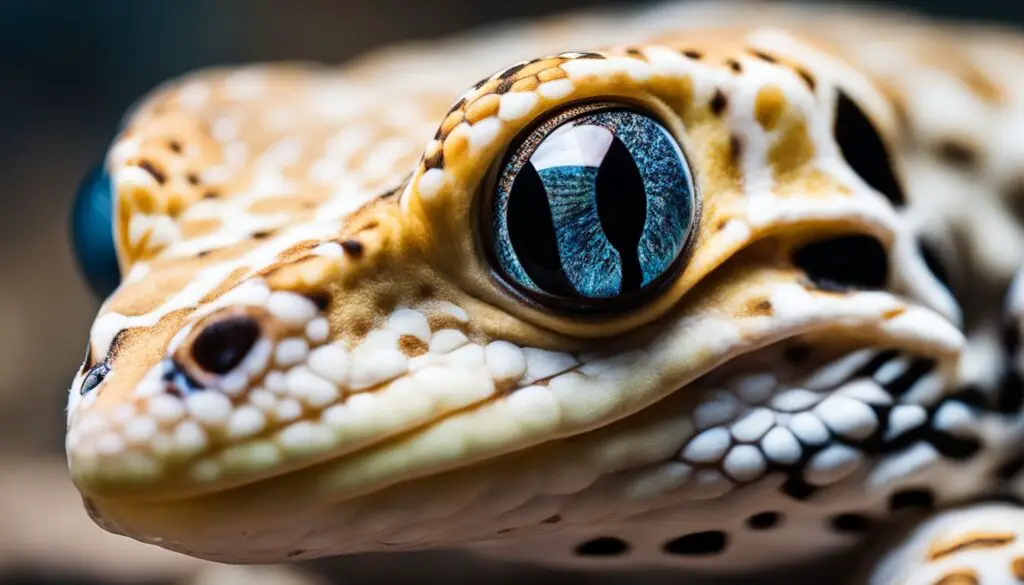
A dead leopard gecko may show signs such as lack of movement and response to touch, sunken eyes and pale skin, absence of breathing, and unusual body stiffness. These symptoms can help you recognize if your leopard gecko is in distress or has passed away.
Lack of Movement and Response to Touch
Leopard geckos usually like to move around and explore their space. If your gecko doesn’t react when you touch it or pick it up, this might be a sign something is wrong. Their bodies should feel lively and responsive under your fingers.
A healthy leopard gecko will often wiggle or try to walk away when you touch them.
Sometimes, if they’re very sick or have already died, they won’t show any signs of life like blinking or moving. Touching them gently is one way to check for a response. But be careful; always handle your pet with love and care.
Sunken Eyes and Pale Skin
If you find your leopard gecko with sunken eyes and pale skin, it might be very sick or even dead. Sunken eyes can mean the gecko has not been drinking enough water, which is serious.
Pale skin can show that the pet is not healthy. These signs are scary for any pet owner to see.
Next, you should look at how the leopard gecko breathes to check for more clues about its health.
Absence of Breathing
A leopard gecko that isn’t breathing is a sure sign it’s not alive. To check for breath, you can put something light, like a feather or a small piece of paper, near its nose and watch closely.
If there’s no movement at all from the object, it means no air is coming in or out. Sometimes this may be hard to see because reptiles breathe less often than we do. You can also gently hold your hand or finger under the lizard’s mouth and nostrils to feel for any airflow.
Make sure the gecko really isn’t breathing before deciding it’s gone. They can stay very still when they are cold or scared, which might make them seem like they aren’t breathing when they are just being extra quiet.
But if you’ve watched for a while and there’s absolutely no sign of breath, this sadly points to death.
Unusual Body Stiffness
If you notice a leopard gecko showing unusual body stiffness, it could be a sign of serious health issues. Dying or dead leopard geckos may exhibit stiff and rigid bodies, which is often an indicator of severe illness.
In such cases, seeking veterinary care immediately is essential to understand the underlying cause and provide appropriate treatment. Pay attention to any changes in your gecko’s physical movements and seek professional assistance if you observe unusual stiffness as it could indicate critical health concerns.
Common Causes of Death in Leopard Geckos

Impaction and digestive issues, metabolic bone disease, severe parasitic infections, and physical injuries and trauma are common causes of death in leopard geckos. Click to read more about how to recognize the signs of a dying leopard gecko.
Impaction and Digestive Issues
Leopard geckos can face digestive problems if they swallow substrates like sand or gravel. This can cause an impaction in their digestive system, leading to serious health issues. Signs of impaction include loss of appetite, swelling in the abdomen, and difficulty passing stool.
If you notice these symptoms, seek veterinary care immediately to prevent further complications for your pet lizard.
Metabolic Bone Disease is also a common issue that leopard geckos face due to a lack of calcium and vitamin D3. This can weaken their bones and lead to difficulties with movement. To prevent this, ensure your gecko’s diet includes proper supplementation and UV lighting for adequate calcium absorption.
Metabolic Bone Disease
Moving on from issues related to impaction and digestive problems in leopard geckos, it’s important to understand another common health concern known as Metabolic Bone Disease (MBD).
This condition affects the bone structure of leopard geckos, making their bones weak and brittle. MBD is typically caused by a lack of calcium and Vitamin D3 in the gecko’s diet, which are essential for strong bone development.
Without these nutrients, leopard geckos can develop deformed limbs, tremors, and difficulty moving. Proper supplementation and a well-balanced diet rich in calcium and Vitamin D3 are crucial for preventing Metabolic Bone Disease in pet leopard geckos.
Severe Parasitic Infections
Severe parasitic infections can make a leopard gecko very sick. Lethargy, weight loss, and lack of appetite might be signs of this problem. Also, unusual droppings and dehydration could indicate a severe parasitic infection.
It’s crucial to seek veterinary care promptly if you notice these symptoms in your pet. A veterinarian can diagnose the issue accurately and provide appropriate treatment to help your leopard gecko recover.
Moving on to “Physical Injuries and Trauma”, it’s important to understand how to recognize and handle potential injuries that may affect your leopard gecko’s health.
Physical Injuries and Trauma
Leopard geckos can get hurt if they fall or are handled roughly. Look for any visible injuries, like cuts or swelling on the body. A leopard gecko with a broken bone might not be able to move normally and will show signs of pain when touched.
If you notice any wounds or unusual behavior, it’s important to seek help from a reptile veterinarian immediately.
Injuries such as burns from heating equipment or attacks by tank mates can cause great harm to the health of your leopard gecko. These injuries may lead to shock, infection, and other serious health issues if left untreated.
Options for Mourning and Remembering Your Leopard Gecko
After the loss of your leopard gecko, it’s important to consider how you would like to remember and honor their memory. Whether it’s through burial, cremation, or seeking veterinary disposal services, there are different options available for you to choose from.
Take the time to consider what feels most meaningful for you and your beloved pet.
Burying or Cremation Options
If your leopard gecko passes away, you may decide to bury it in a special spot in your garden. Alternatively, some veterinary clinics offer cremation services for deceased pets. Cremation allows you to keep the ashes as a loving memory of your gecko.
Whatever option you choose, it’s important to handle the body with care and respect once it has passed away. Remember that these decisions are personal and there is no right or wrong way to mourn the loss of your beloved pet.
Veterinary Disposal Services
If your leopard gecko passes away, you may consider seeking the assistance of veterinary disposal services. Veterinary professionals can provide guidance on options like cremation or burial for your deceased pet.
They can also offer support and advice on how to cope with the loss of your beloved leopard gecko, helping you navigate this difficult time with care and understanding. Understanding these services can help ensure that you handle the situation in a respectful and compassionate manner.
Now let’s explore some common causes of death in leopard geckos.
Conclusion
In conclusion, recognizing the signs of a dying leopard gecko is crucial for its well-being. By observing lethargy, sunken eyes, and lack of response to touch, you can easily spot these symptoms.
Practical steps such as seeking veterinary care and being observant of unusual behavior are key in ensuring your pet’s health. Have you considered how these simple actions can make a significant impact on your leopard gecko’s life? Take action today and be proactive in caring for your beloved reptile companion.
If you’re looking to find a new companion after mourning your pet, consider visiting our selection of Mourning Geckos to help fill the void left by your beloved Leopard Gecko.
FAQs
1. How can I tell if my leopard gecko is dead?
You may notice a lack of movement, unresponsiveness to touch or noise, sunken eyes, and no signs of breathing.
2. What are the signs of illness in a leopard gecko?
Signs of illness include loss of appetite, weight loss, lethargy, unusual skin coloration or texture, and abnormal feces.
3. Should I rely on visual cues alone to determine if my leopard gecko is dead?
No, it’s important to observe other indicators such as lack of response to gentle stimuli and minimal body warmth before confirming that your pet is deceased.
4. Can I perform CPR on a lethargic or unresponsive leopard gecko?
Performing CPR on reptiles like leopard geckos is not effective due to their respiratory system; seek immediate veterinary assistance instead.
5. How can I ensure the well-being of my leopard gecko?
Maintain proper temperature and humidity levels in the enclosure, provide appropriate diet and clean water, conduct regular health checks for any abnormalities.

